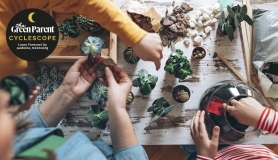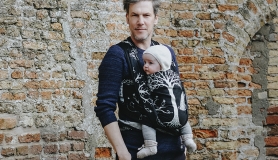All children love the natural world, they know instinctively that trees are magical and mythic beings, they teach us how to admire the world. Each time I end up planting trees with children, they reveal my own dreaming child, and I am shown simple happiness.
Through my work of directing the Earth Restoration Service Charity, I have worked with many assembly halls packed with children. In the beginning I was apprehensive, looking at my feet, and muttering on about photosynthesis and chlorophyll; parroting scientific facts. I came to recognise that this wasn’t in full service to these bright eyed children.
“Children’s enthusiasm for life, their gift of being in the moment, and their playfulness, is the water of life which rejuvenates our society, which revives the green shoots, and offers us a chance for new beginnings”
I changed my interpretation, and I tried to engage with their inherent reveries and imaginations, by telling them of my own personal appreciation for the world, using a poetic and bendy language instead of a scientific one. I brought music, flutes and drums and a bag of stories: tales of how once trees would speak to humans, or how trees had dreams of their own. The children started to pay attention. I included the scientific facts indirectly in the stories themselves. For example, in the Baltic region, old myths would say that children are born from the knot holes of the pine trees. Through this story children learn how trees gives us life (oxygen), that trees give us the ability to breathe, the story reveals the scientific truth that oxygen is an invisibly attached umbilical chord we all have to trees. It exposes to us the awareness that their fate is our fate. We are born into a close parental interdependency to trees and we recognise this with each breath.
Our philosophical underpinnings in education are to explain everything through logic, and children with good “conceptional” intelligence do well in such an environment. But the extraordinary freshness of the child’s imagination makes each child a prodigy, each one a genius, and none can be seen as better than the other. The danger today is that we have narrowed the field, today we have a test driven education, which divides and separates the children’s abilities. This objective teaching, I have discovered, lacks the impetus in communicating the ethical principles, and it lacks it to a great degree when it comes to teaching ecology. We need to make a space for dreams, for reveries, and the poetic imagination, otherwise, how can we teach and inspire?
Children’s enthusiasm for life, their gift of being in the moment, and their playfulness, is the water of life which rejuvenates our society, which revives the green shoots, and offers us a chance for new beginnings. To bring it back to our lives we only have to remember our own inner child who once ran wild and barefoot through the woods.
Through the work of ERS in restoring local ecosystems and planting new woodlands, I’ve had countless calls with organisations and councils, and few have been inspired. Its been a dog fight, met with resistance at every turn. But since we have started working with children, their sole enthusiasm and their love of the outdoors have brushed up against the councillors who have had to surrender their hardline and cynical stance of ecology to allow new woodlands to sprout in their communities. The result has not been insignificant: we have ended up planting over two hundred new woodlands every year, and the children have planted up to sixty thousand trees – they are restoring the world they want to live in.
MORE INSPIRATION
Find out about the work of the Earth Restoration Service at earthrestorationservice.org







